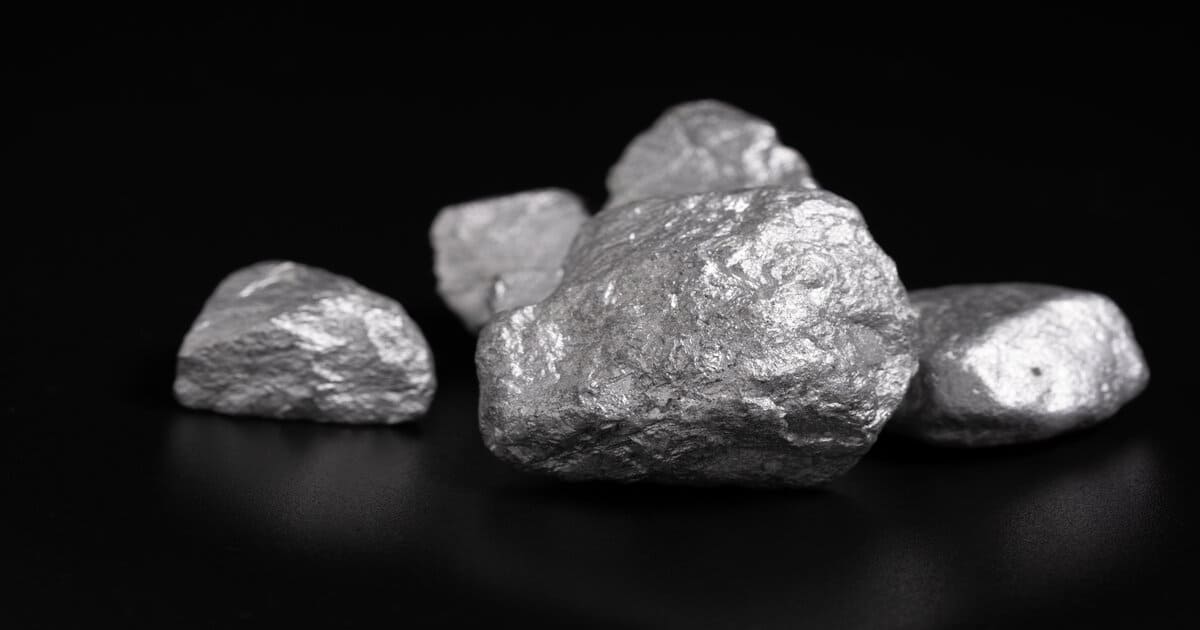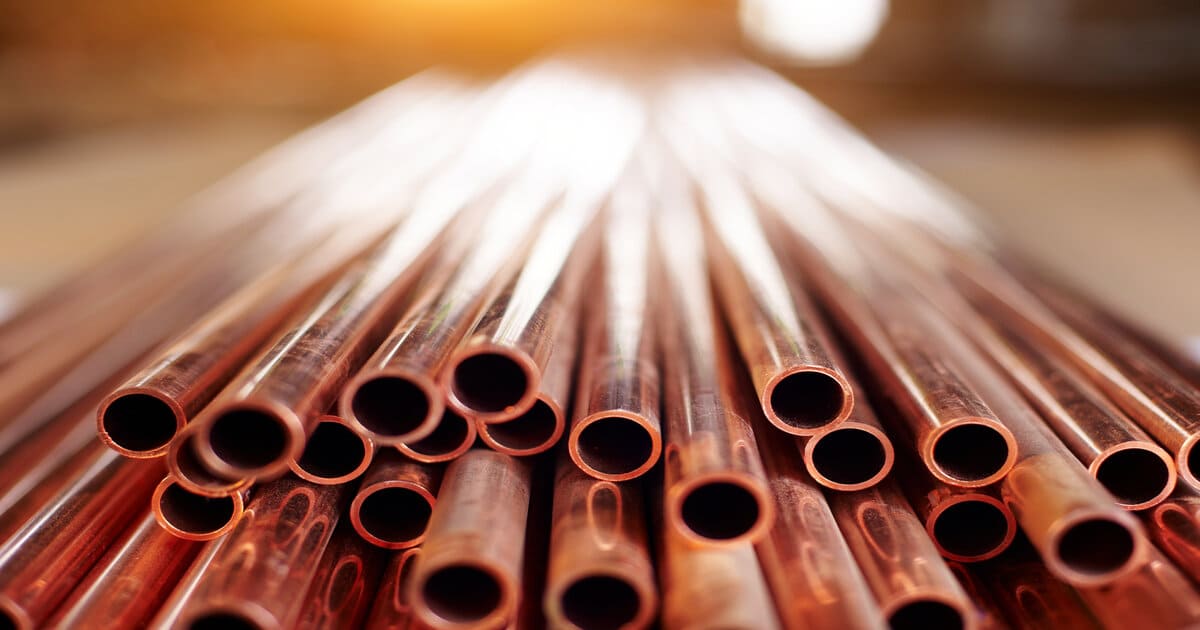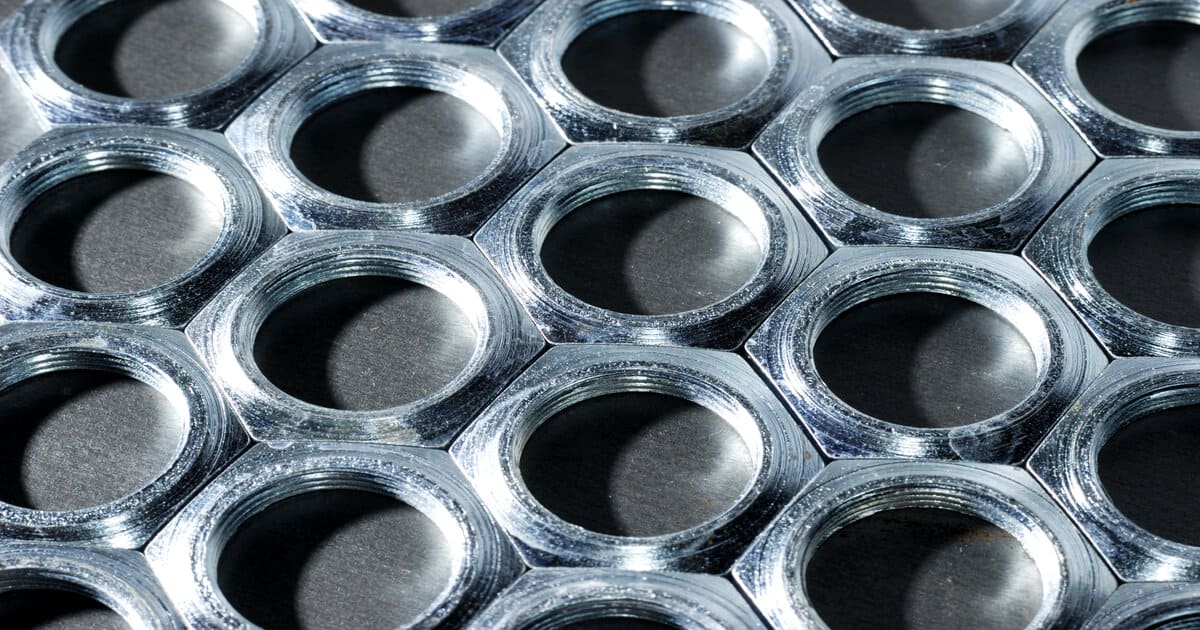Ductility in metals refers to their ability to be drawn or stretched into thin wires without breaking. This property measures a metal’s capacity to withstand tensile stress and is crucial in numerous applications requiring flexibility and deformation resistance. Metals with high ductility, such as gold and copper, can undergo significant deformation before failure, making them ideal for the electronics and construction industries. The degree of ductility in a metal is influenced by its crystal structure, temperature, and impurities, playing a pivotal role in determining its suitability for specific uses.
Importance of Ductility and Strength in Industrial and Technological Applications
Ductility and strength are vital properties in metals, significantly impacting their practicality and reliability in various industrial and technological sectors. Metals with a combination of these traits, like steel and aluminum, are indispensable in the construction, automotive, and aerospace industries, where safety and durability are paramount. The flexibility of a metal allows it to absorb energy and undergo deformation without fracturing, which is essential in applications where flexibility and resistance to impact are critical. Meanwhile, strength ensures the material can withstand heavy loads and high stress, making these metals foundational to modern engineering and technology advancements. Their symbiotic relationship dictates the efficiency and lifespan of countless products and structures, underscoring their importance in contemporary material science.
Understanding Ductility
Ductility is the ability of a material, particularly metals, to undergo significant plastic deformation before rupture. It is a key indicator of a metal’s capability to be stretched into a wire or bent without breaking. It is fundamental for various manufacturing processes and applications where flexibility and resilience are essential.
Explanation of Metal Strength
Metal strength refers to the capacity of a metal to resist deformation and failure under applied forces. It encompasses several aspects, including tensile strength, which measures resistance to pulling forces, and compressive strength, indicating how well the metal can withstand squeezing or compressing forces. This attribute is crucial for ensuring the stability and longevity of metal-based structures and components in various engineering applications.
Relationship between Ductility and Strength in Metals
The relationship between flexibility and strength in metals is a crucial aspect of material science. As strength increases, flexibility tends to decrease, and vice versa. Stronger metals resist deformation, while ductile metals can stretch and bend more easily. However, the ideal balance of these properties depends on the specific application, with some advanced alloys and treatment processes designed to enhance both. Understanding and manipulating this relationship allows for creation of metals tailored for specific needs, ranging from highly durable construction materials to flexible wires and metal sheets.

Gold (Au)
Physical and Chemical Properties
Gold, symbolized as Au, is renowned for its distinct bright yellow color and high luster. It is chemically inert, resists corrosion and oxidation, and is highly stable.
Applications in Electronics and Jewelry
Gold’s excellent conductivity and resistance to tarnish make it valuable in electronics, particularly in high-end connectors and circuit boards. Its aesthetic appeal and malleability have also made it a preferred material in jewelry-making for centuries.
Notable Features of Ductility and Strength
Gold is one of the most malleable metals, capable of being drawn into thin wires without breaking. While not exceptionally strong in tensile strength, its flexibility allows for remarkable stretching and shaping, which is advantageous in jewelry’s fine detailing and precise electronics applications.
Silver (Ag)
Characteristics and Behavior Under Stress
Silver, represented by the symbol Ag, is known for its high electrical and thermal conductivity. Under stress, it exhibits excellent ductility, forming it into various shapes without losing strength.
Industrial and Decorative Uses
In industry, silver’s conductivity makes it valuable for electrical contacts and conductors. Its reflective quality is utilized in mirrors and coatings. For decorative purposes, its natural luster and workability make it a popular choice for jewelry and silverware.
Comparison of Ductility with Other Metals
Silver stands out for its higher flexibility than most other metals, surpassed only by gold. Combined with its strength, this property makes it highly versatile for industrial applications and fine craftsmanship in decorative arts.

Platinum (Pt)
Unique Properties and High Resistance to Corrosion
Platinum, denoted by Pt, is a rare metal characterized by its silvery-white appearance and remarkable corrosion resistance, even at high temperatures. It maintains its integrity and appearance over time, unaffected by air or water.
Use in Catalytic Converters and Electronics
Platinum’sPlatinum’s stability and high melting point make it essential in catalytic converters for reducing vehicle emissions. Its reliability under thermal stress also suits it for various electronic components, particularly in high-temperature environments.
Balance between Ductility and Durability
While platinum is less malleable than gold and silver, it offers a commendable balance between flexibility and durability. This balance makes it suitable for intricate jewelry designs requiring detailed craftsmanship and long-lasting wear.
Aluminum (Al)
Lightweight Nature and High Ductility
Aluminum, symbolized as Al is known for being extremely lightweight yet remarkably ductile. This combination allows it to be easily formed into various shapes without compromising its integrity.
Wide Range of Applications from Aviation to Packaging
Aluminum is widely used in aviation for constructing lightweight yet strong aircraft components. Its non-toxic nature also makes it ideal for food and beverage packaging.
Aluminum Alloys for Enhanced Strength
While pure aluminum is soft and highly malleable, alloying it with copper, magnesium, or zinc significantly enhances its strength. These aluminum alloys are crucial in applications requiring a balance of strength, weight, and resistance to corrosion, such as in the automotive and construction industries.

Copper (Cu)
Conductivity and Malleability
Copper, represented by Cu, stands out for its excellent electrical conductivity and high malleability. This combination allows for easy shaping and forming, making it highly versatile.
Role in Electrical Infrastructure and Coinage
Copper’s conductivity makes it a staple in electrical wiring and components, playing a crucial role in the electrical infrastructure. Its durability and workability also make it a long-standing choice for coinage in many countries.
Copper Alloys and Their Improved Characteristics
Alloying copper with other metals, like zinc, to form brass or tin to create bronze enhances its strength and corrosion resistance. These alloys expand copper’s applications, including in marine environments, architectural elements, and musical instruments, where additional durability is necessary.
Nickel (Ni)
Corrosion Resistance and Ductility
Nickel, denoted as Ni, is highly valued for its corrosion resistance and significant flexibility. It maintains its properties under various environmental conditions, making it reliable in harsh settings.
Importance in Stainless Steel and Other Alloys
Nickel is a key component in the formulation of stainless steel, enhancing its corrosion resistance and strength. Its presence in various alloys improves their durability and resistance to oxidation and high-temperature deformation.
Versatile Industrial Applications
Due to its resilient nature, nickel finds diverse applications in chemical manufacturing, battery production, and aerospace industries. Its ability to withstand extreme environments makes it indispensable in creating equipment and components subjected to severe stress and corrosive elements.

Iron (Fe)
Fundamental Metal with Varied Allotropes
Iron, symbolized as Fe is a fundamental metal in many industrial processes and is unique due to its various allotropes, which have different molecular structures. These allotropes give iron a range of physical properties adaptable to diverse applications.
Role in Steel Production
Iron’s primary role is in steel production, acting as the base metal. By alloying with carbon and other elements, it forms steel, which boasts various mechanical properties suitable for numerous applications, from construction to automotive manufacturing.
Balancing Ductility with Carbon Content
Iron’s ductility significantly changes with its carbon content; higher carbon levels make it harder but less ductile. Steelmaking involves balancing these elements to achieve the desired combination of strength and flexibility, which is critical for various engineering and construction applications.
Titanium (Ti)
Superior Strength-to-Weight Ratio
Titanium, with the chemical symbol Ti, is renowned for its exceptional strength-to-weight ratio, one of the highest among metals. This property makes it both strong and lightweight, a highly sought-after combination in materials engineering.
Applications in Aerospace and Biomedical Fields
Its low density and high strength make titanium ideal for aerospace applications, where reducing weight without sacrificing strength is crucial. In the biomedical field, its compatibility with the human body allows for its use in implants and prosthetics.
Alloying with Other Metals for Optimal Performance
Titanium is often alloyed with elements like aluminum and vanadium to enhance its properties, such as corrosion resistance and strength. These alloys extend their use to high-performance applications like racing bikes, military aircraft, and advanced medical devices.

Tantalum (Ta)
High Melting Point and Corrosion Resistance
Tantalum, indicated by the symbol Ta, is distinguished by its exceptionally high melting point and outstanding corrosion resistance. These features make it reliable in extreme temperatures and corrosive environments.
Use in Electronics and Laboratory Equipment
Its stability at high temperatures and resistance to chemical attack make tantalum ideal for electronic components, such as capacitors and resistors. It’s also used in laboratory equipment that requires non-reactivity and durability under chemical exposure.
Comparatively Rare and Valuable
Tantalum is a relatively rare metal, found primarily in certain minerals in Africa and Australia. Its rarity and unique properties render it a valuable resource in both technological and industrial applications.
Palladium (Pd)
Ductility and Ability to Absorb Hydrogen
Palladium, represented by the symbol Pd, is known for its high ductility and unique ability to absorb a large amount of hydrogen, a property exploited in various chemical processes. This makes it exceptionally versatile and useful in industrial applications.
Use in Catalysis and Jewelry
Palladium plays a crucial role in catalysis, particularly in automotive catalytic converters, where it aids in reducing harmful emissions. It’s also valued in the jewelry industry for its lustrous white appearance, serving as a platinum alternative.
Recent Rise in Demand and Value
In recent years, the demand for palladium has surged, primarily driven by the automotive industry’s need for catalytic converters. This increased demand and limited supply have significantly elevated its market value and importance in the global metal market.

Comparing the Ductility and Strength of the Listed Metals
The ductility and strength of metals like gold, silver, and copper place them at the forefront regarding malleability and ease of forming into various shapes. Metals such as titanium, iron, and nickel, while less ductile, offer greater strength, making them ideal for structural and high-stress applications. The balance between these properties varies significantly among these metals, each finding its niche based on this balance. Understanding these differences is important in selecting the right metal for specific applications, whether for delicate jewelry, robust construction, or advanced aerospace components.
Impact of Composition on Metal Performance
The composition of a metal greatly influences its performance characteristics. Elements like carbon in steel or aluminum in titanium alloys can drastically alter strength, flexibility, and corrosion resistance. For example, adding carbon to iron creates steel, significantly enhancing its strength, while zinc in copper forms brass, improving its wear resistance. The strategic addition of alloying elements allows for the creating of materials with tailored properties to meet specific demands, from electrical conductivity in copper alloys to the exceptional strength-to-weight ratio in titanium alloys. This versatility underscores the importance of composition in defining the utility and application scope of different metals.
Role of Metals in Technological Advancements
Metals have been instrumental in advancing technology due to their excellent conductivity. Titanium and aluminum, with their superior strength-to-weight ratios, have revolutionized the aerospace and automotive industries, enabling the construction of lighter, more fuel-efficient vehicles. Advanced alloys, like those involving nickel and palladium, play critical roles in catalysis and energy storage, facilitating significant progress in environmental technologies. Each of these metals, with their unique properties, has contributed to developing cutting-edge technologies, driving innovation across multiple sectors, from medical devices to renewable energy systems. Their continued evolution and application are pivotal in shaping the future of technology and sustainable development.
Future Trends and Potential New Applications of Metals
The future of metals in technology and industry is poised for exciting developments. Innovations in metallurgy could lead to the creation of even lighter, stronger, and more corrosion-resistant alloys, further pushing the boundaries in aerospace and automotive design. The expanding field of nanotechnology presents the potential for metals like gold and silver in medical diagnostics and treatment, particularly in targeted drug delivery and imaging. In sustainable energy, metals such as palladium and tantalum may increase use in hydrogen storage and fuel cell technologies, contributing to cleaner energy solutions. Furthermore, the ongoing miniaturization in electronics will likely demand more efficient and reliable metallic components, driving research in high-conductivity and high-strength materials. These advancements, along with increasing focus on recycling and reducing the environmental impact, are set to define the role of metals in the future technological landscape.
Environmental Sustainability and the Impact of Metal Use
The environmental impact and sustainability of metal usage are critical concerns today. The mining and processing of metals like iron, copper, and tantalum can lead to significant ecological damage, including habitat destruction and pollution. There is a growing emphasis on sustainable practices like advanced mining technologies, efficient recycling, and the development of new, more sustainable alloys to mitigate these effects. Recycling, in particular, is vital in reducing the need for raw material extraction, conserving energy, and supporting a circular economy. As the demand for metals in various technologies increases, the metal industry is challenged to innovate and adapt, ensuring the responsible and sustainable use of these essential resources.
Role of Metals in Advancing Industries and Technology
The significance of ductile metals in various industries cannot be overstated, as they form the backbone of modern technology and industrial development. Metals like gold, silver, and copper have revolutionized electronics and electrical engineering, while titanium and aluminum have transformed the aerospace and automotive sectors. The evolving role of these metals, with their unique balance of flexibility and strength, continues to drive innovation in fields ranging from medical technology to renewable energy. As we advance, these metals’ ongoing adaptation and enhancement will remain crucial in meeting the ever-changing demands and challenges of our technological and industrial landscapes.
Image
Frequently Asked Questions
Why is the Strength of a Metal Important?
The strength of a metal determines its ability to withstand external forces without deforming or breaking. It’s crucial for structural integrity in various applications, from buildings to vehicles.
How Does the Composition of a Metal Affect Its Properties?
The composition, including the types and amounts of alloying elements, significantly influences a metal’s strength, flexibility, corrosion resistance, and other properties. Adjusting the composition allows for the creation of alloys tailored for specific applications.
Can Metals be Both Ductile and Strong?
While a trade-off often exists between flexibility and strength, certain alloys are engineered to balance both. This is achieved through specific alloying and manufacturing processes.
What Role Do Ductile Metals Play in Technology?
Ductile metals are essential in various technological applications due to their electrical conductivity, malleability, and strength. They are integral in the electronics, aerospace, automotive, and construction industries.
References

